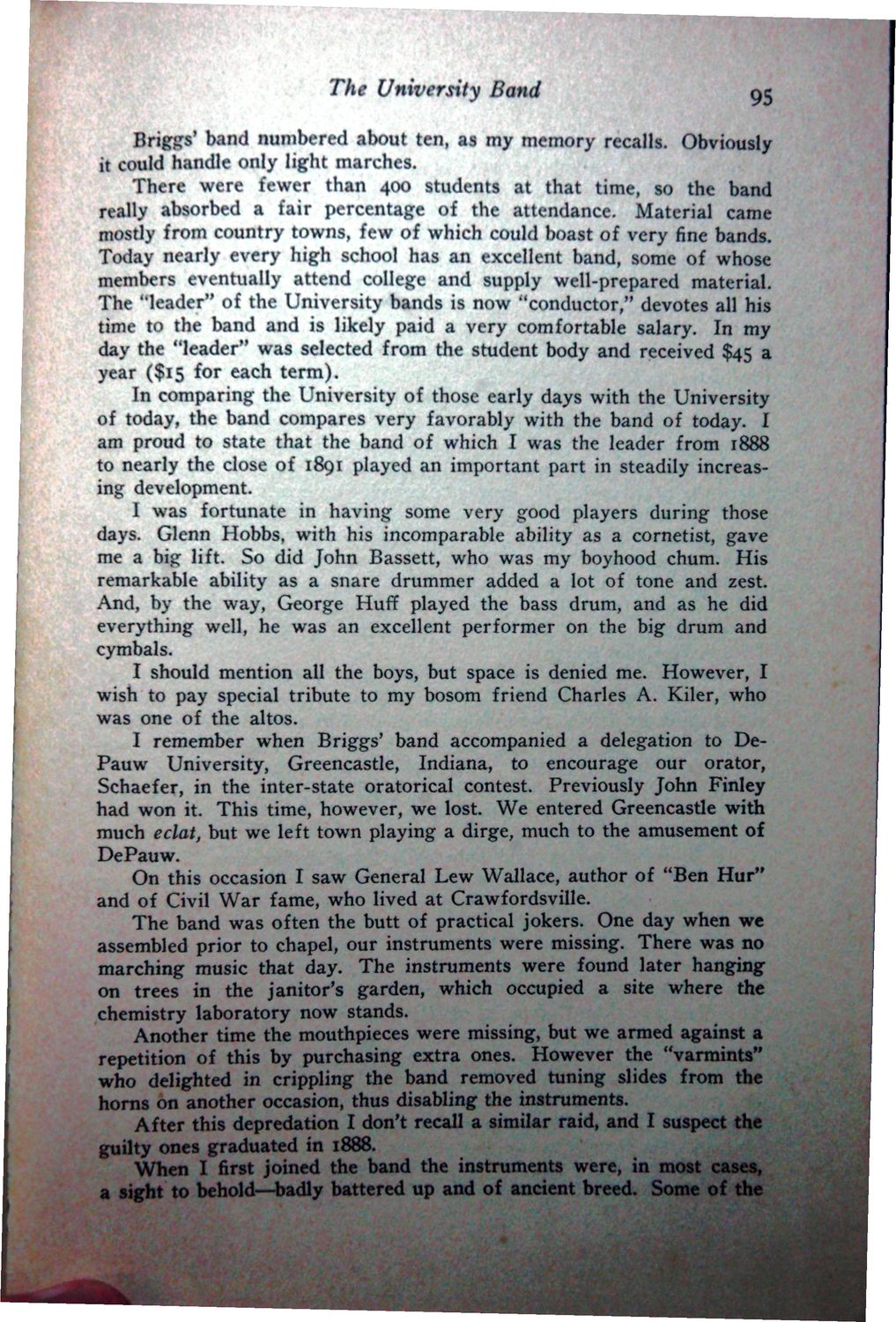| |
| |
Caption: Book - Banks of the Boneyard (Charles Kiler)
This is a reduced-resolution page image for fast online browsing.

EXTRACTED TEXT FROM PAGE:
The University Band 95 B r i g s ' band numbered about ten, as my memory recalls. Obviously it could handle only light marches. There were fewer than 400 students at that time, so the band really absorbed a fair percentage of the attendance. Material came mostly from country towns, few of which could boast of very fine bands. Today nearly every high school has an excellent band, some of whose members eventually attend college and supply well-prepared material. The "leader" of the University bands is now "conductor," devotes all his time to the band and is likely paid a very comfortable salary. In my day the "leader" was selected from the student body and received $45 a year ($15 for each term). In comparing the University of those early days with the University of today, the band compares very favorably with the band of today. I am proud to state that the band of which I was the leader from 1888 to nearly the close of 1891 played an important part in steadily increasing development. I was fortunate in having some very good players during those days. Glenn Hobbs, with his incomparable ability as a cornetist, gave me a big lift. So did John Bassett, who was my boyhood chum. His remarkable ability as a snare drummer added a lot of tone and zest. And, by the way, George Huff played the bass drum, and as he did everything well, he was an excellent performer on the big drum and cymbals. I should mention all the boys, but space is denied me. However, I wish to pay special tribute to my bosom friend Charles A. Kiler, who was one of the altos. I remember when Briggs' band accompanied a delegation to DePauw University, Greencastle, Indiana, to encourage our orator, Schaefer, in the inter-state oratorical contest. Previously John Finley had won it. This time, however, we lost. We entered Greencastle with much eclat, but we left town playing a dirge, much to the amusement of DePauw. On this occasion I saw General Lew Wallace, author of "Ben Hur" and of Civil War fame, who lived at Crawfordsville. The band was often the butt of practical jokers. One day when we assembled prior to chapel, our instruments were missing. There was no marching music that day. The instruments were found later hanging on trees in the janitor's garden, which occupied a site where the chemistry laboratory now stands. Another time the mouthpieces were missing, but we armed against a repetition of this by purchasing extra ones. However the "varmints" who delighted in crippling the band removed tuning slides from the horns on another occasion, thus disabling the instruments. After this depredation I don't recall a similar raid, and I suspect the guilty ones graduated in 1888. When I first joined the band the instruments were, in most cases, a sight to behold—badly battered up and of ancient breed. Some of the
| |